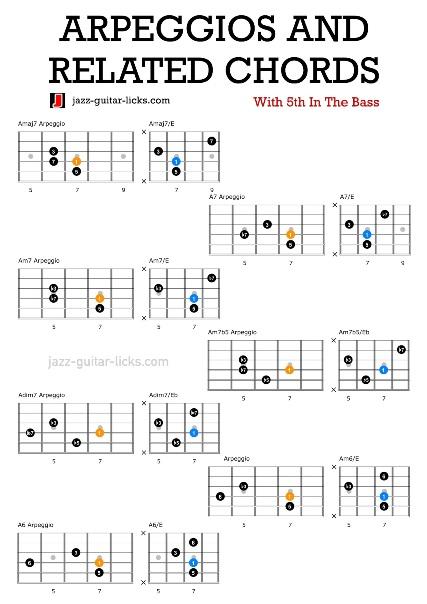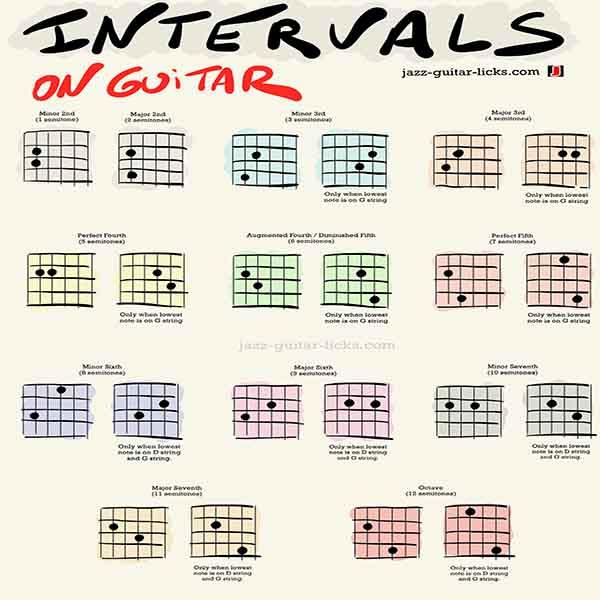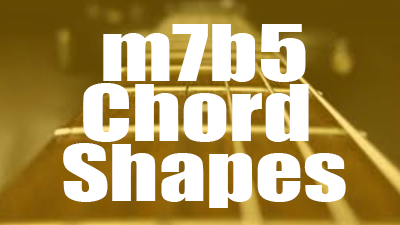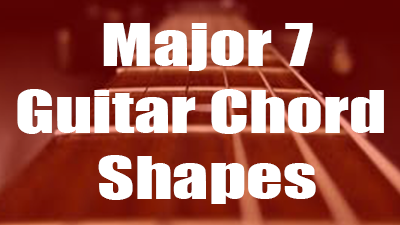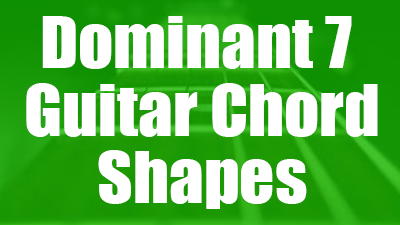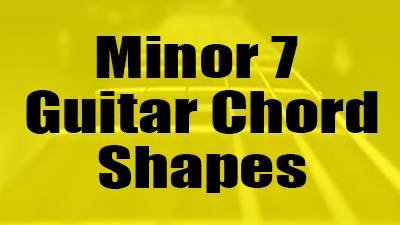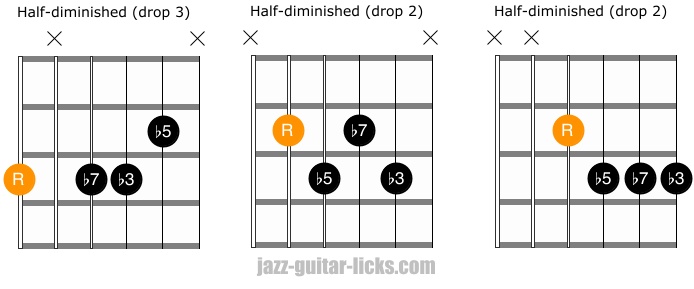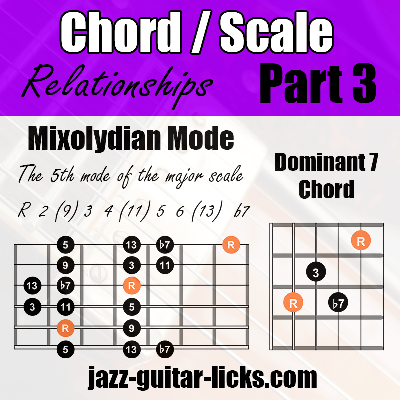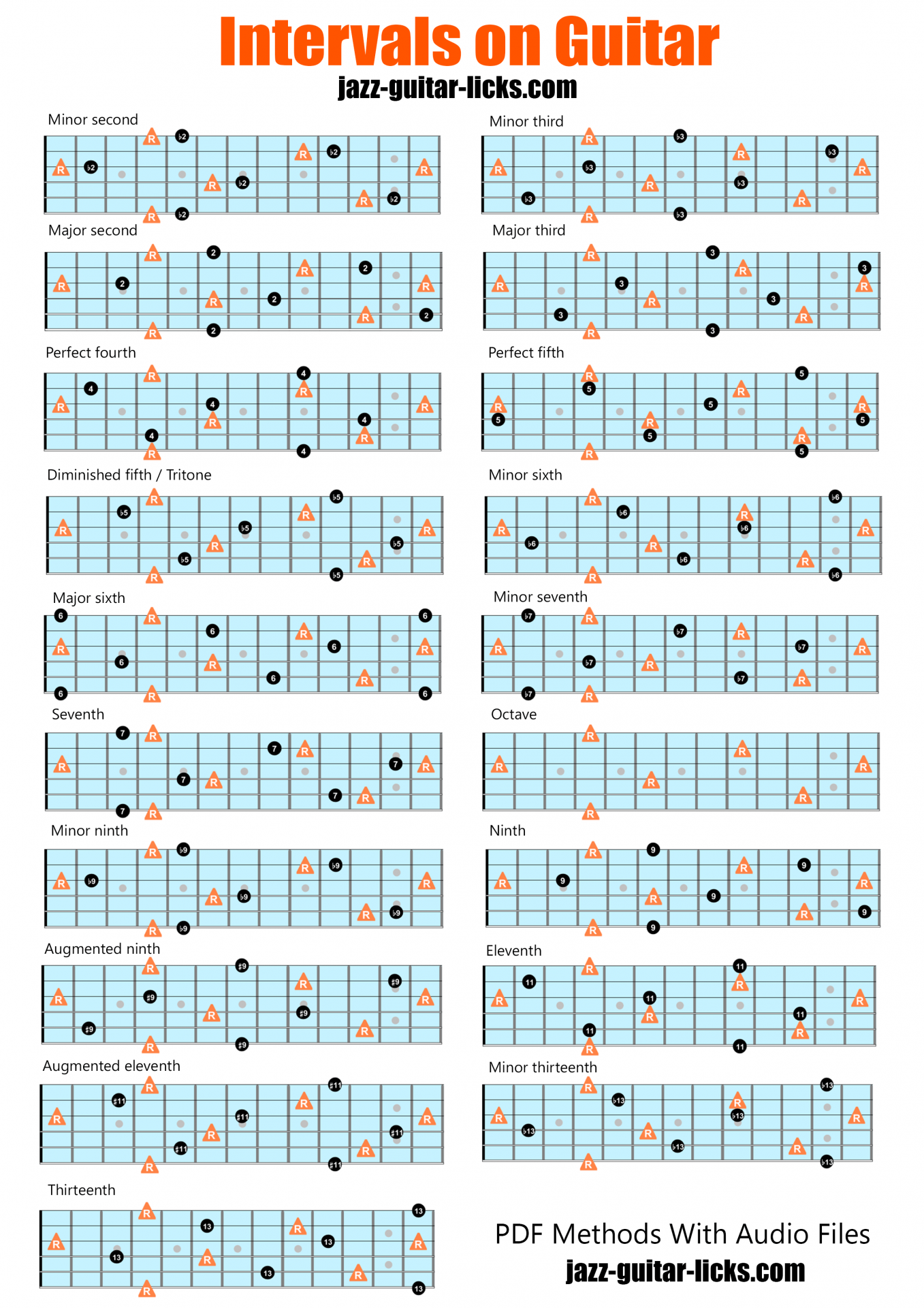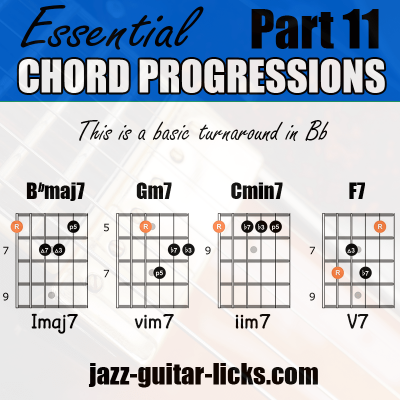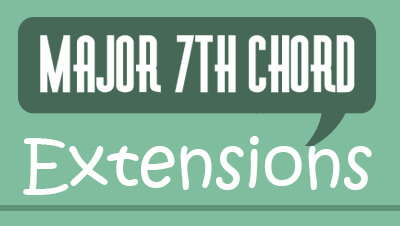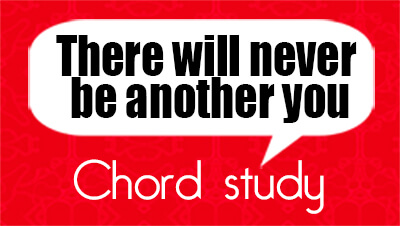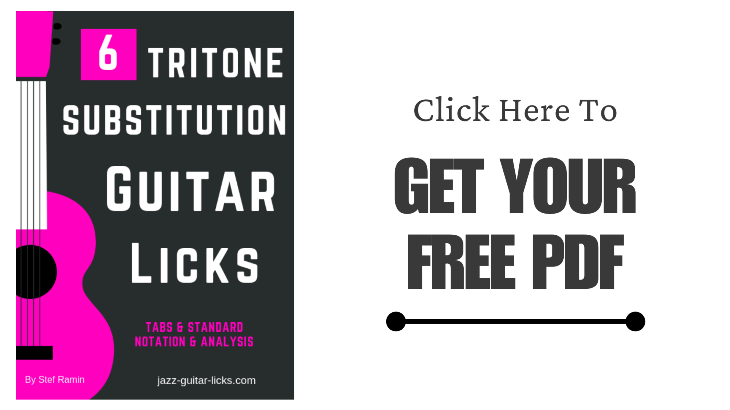diagrams
-
Arpeggios And Related Chords On Guitar - Cheat Sheet
- By jazz-guitar-licks
- On 2024-04-27
- In Guitar Cheat Sheets, Methods, eBooks, Posters
- 0 comments
Here is a free printable sheet cheat for guitar showing the relation between the main types of arpeggios and chord voicings with fifth in the bass.
-
30 Types Of Open A Chords - Free Cheat Sheet With Diagrams
- By jazz-guitar-licks
- On 2023-04-14
- 0 comments
This cheat sheet provides 30 voicing shapes for playing 30 types of open A chords on guitar :
Am, A, A+, Asus4, Asus2, Amadd9, A5, A6, Am6, A6/9, Am6/9, A7, Adim7, A7sus4, Amaj7, Am7, AmMaj7, Amaj7b5, Am7b5, A7+, A7b5, A7b9, A7#9, A7#5b9, A9, Amaj9, Am9, A11, Am11, A13.
-
Intervals On Guitar - PDF Cheat Sheet With Shapes - Free Download
- By jazz-guitar-licks
- On 2021-09-25
- In Guitar Cheat Sheets, Methods, eBooks, Posters
- 0 comments
This free PDF chart contains shapes for a better understanding on how to play of music intervals on the guitar. This cheat sheet is available for free (or Pay What You Want) on Jazz Guitar Licks Gumroad Library
-
Half-diminished Chords - 28 Guitar Shapes
- By jazz-guitar-licks
- On 2020-09-18
- In Chords / Voicings
- 0 comments
Half-diminished chords (aka m7b5) have an especially important place in jazz music. They are generally found in minor 2 5 1 progressions as the ii chord or can be used as substitutions for dominant 7 chords. This blog post provides 28 different shapes based on drop 2, drop 3 and drop 2-4 voicings for playing m7b5 chords on guitar.
-
28 Major 7 Guitar Chord Diagrams
- By jazz-guitar-licks
- On 2020-08-28
- In Chords / Voicings
- 0 comments
This blog post provides 28 positions with intervals to play major seventh chords (maj7) on guitar. Three types of voicings are used : drop 2, drop 3, drop 2-4 and their inversions.
The diagrams are organized this way:
-
28 Ways of Playing a Dominant 7 Chord On Guitar
- By jazz-guitar-licks
- On 2020-08-22
- In Chords / Voicings
- 0 comments
Dominant 7 chords are surely the most important to know when you want to try your hand at jazz guitar. These chords are very present in jazz and blues tunes, that's why it is crucial to know them at your fingertips.This quick lesson show 28 dominant 7 guitar shapes based on drop 2, drop 3 and drop 2-4 voicings.
-
Minor Seventh Guitar Chord Chart - 28 Positions
- By jazz-guitar-licks
- On 2020-08-16
- 0 comments
This blog article provides 28 guitar chord shapes to play minor seventh chord on guitar. These positions are built using three different types of voicings as Drop 2, drop 3 and drop 2-4.
-
15 Easy Jazz Guitar Chords For Beginners
- By jazz-guitar-licks
- On 2020-02-28
- In Chords / Voicings
- 0 comments
This lesson provides 15 basic jazz guitar chords that every beginning jazz guitar player should know.
These chords are grouped into five families :
- Major seventh chords (Maj7)
- Minor seventh (m7)
- Dominant 7th (7)
- Half diminished / minor seventh flat fifth (m7b5)
- Diminished 7th (dim7)
-
Guitar Intervals - Infographic With Shapes
- By jazz-guitar-licks
- On 2019-12-26
- 1 comments
This infographic chart show how look simple and compound intervals on the guitar neck. Click on the right mouse button and choose "save target as."
-
Modes of the Major Scale and Related Chords - Guitar Infographic
- By jazz-guitar-licks
- On 2018-07-24
- In Infographics
- 0 comments
This infographic provide guitar shapes that will help you to make the link between the seven modes of the major scale and their related drop 2 and drop 3 chords.
-
Dominant 7 Chord Altered Extensions - Guitar Infographic
- By jazz-guitar-licks
- On 2018-05-01
- In Infographics
- 0 comments
Dominant 7 Chord Altered Extensions - Guitar Infographic
-
Extended Major 7th Chords | Guitar Diagrams & Voicings
- By jazz-guitar-licks
- On 2017-04-01
- 0 comments
Seventh chords (aka four-note chords) represent the backbone of jazz harmony. It is common to extend them with extra tones. These other notes form the upper structure of a chord which includes the 9th, 11th and 13th.
Adding extensions to chords help to get off the beaten tracks and provides some new harmonic colors to your playing (chord soloing, comping, and arrangement).
This lesson provides useful extended major 7th chord shapes to apply to your playing.
-
Minor and Major 6 chords on Guitar | 24 Diagrams and Voicings
- By jazz-guitar-licks
- On 2017-02-04
- 0 comments
Understanding and playing 6th chords—both major and minor—is a powerful way to add richness and color to your guitar playing.
These chords are versatile and frequently used in jazz, blues, rock, and pop music, offering a melodic and harmonic depth that goes beyond standard major and minor chords.
This lesson provides 24 guitar diagrams and voicing charts to play major 6 and minor 6 chords on guitar.
-
There Will Never Be Another You - Jazz Guitar Chord Lesson
- By jazz-guitar-licks
- On 2017-01-20
- In Jazz Standards
- 0 comments
"There Will Never Be Another You" is a popular song by Harry Warren (music) and Mack Gordon (lyrics).
It is one of the most known jazz standards and an indispensable study for any jazz guitarist.
This jazz guitar lesson provides you different chord voicings (drop 2, inverted, rootless and extended chords) on the top four strings of the guitar to comp over this jazz tune.
